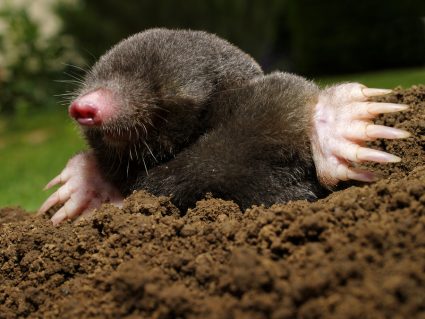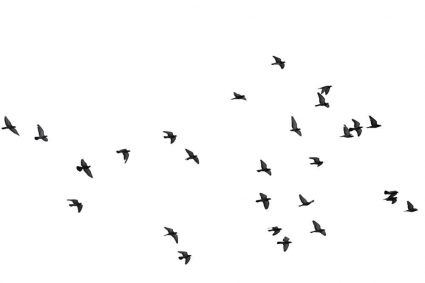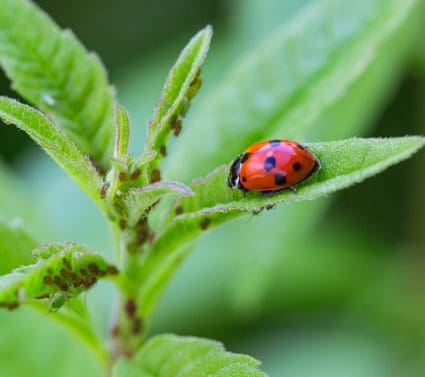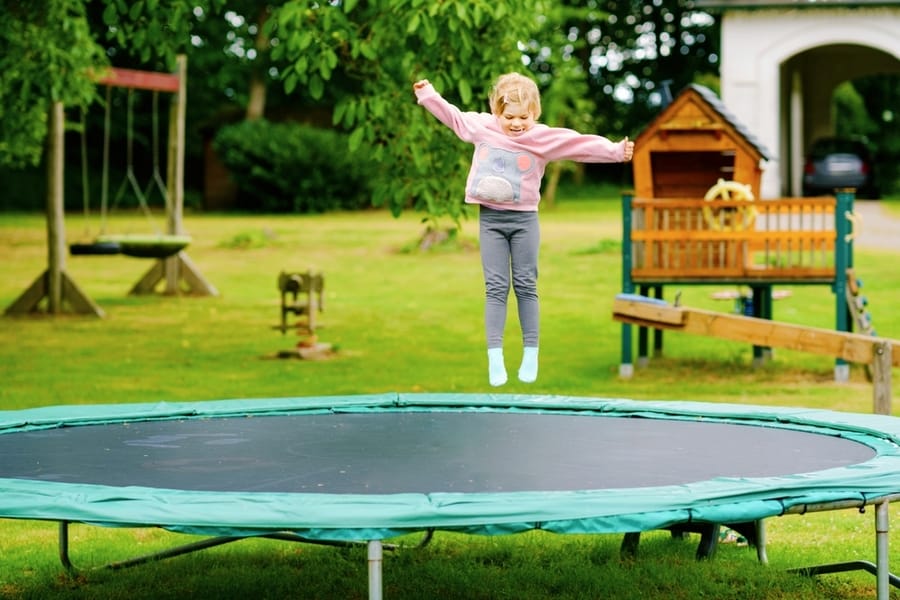
Birds are often a lovely sight to behold. Their chirpings can serve as an early-morning wake-up call, and their presence brings peace to the environment.
However, these cute creatures can get annoying pretty fast, especially when they turn your trampoline into a playground.
What can you do to keep the birds out of your trampoline? We will walk you through some practical strategies in this guide.
Birds, however peaceful, can be a nuisance, especially when they are uninvited. With birds perching on your trampoline, you have to clean up now and then.
However, with specific preventive measures in place, you can cut the chances of this happening by half. Below are some bird-deterring strategies you can deploy:
- Attach reflective objects like CDs and tin foil to your trampoline.
- Use wind chimes (if you don’t mind the loud noise it produces).
- Attach cable ties to your trampoline.
- Place a cover over your trampoline (preferably those from nets).
Keep reading to learn how to deploy these strategies and a lot more.
In the following headings, we will walk you through seven foolproof methods to frighten birds away from trampolines. Also, we will answer some common questions about bird infestation in homes.
7 Ways To Keep Birds Out of Trampoline
Keeping your trampoline in the open in your compound means you have little control over what gets on it.
Birds can leave droppings on your trampoline, mucking up your space. However much of a bird lover you are, you won’t always be up for cleaning their mess.
Below, we will show you some ways to keep your avian friends out of your home trampoline.
1. Get a Trampoline Cover

Birds have a common trait. Once they find an area to perch, it is hard to get them to stop. A cover, however, can discourage them from landing on your trampoline.
Trampoline covers protect the outdoor plaything from rain and harsh weather elements. Nevertheless, they can further shield your trampoline from invasive birds.
Modern trampolines now come with a cover you can permanently leave on or take off as you like.
Alternatively, if your trampoline does not have a cover, a regular tarp or a thick covering will do.
The best trampoline covers to use are those made from nets. These will collect all bird droppings and still let the rain filter through.
If your trampoline cover has no holes, it can gather water. With no way to drain this water, the trampoline can get heavy and break the poles holding it up.
Always cover your trampoline when not in use until the next time. Ensure that the material extends to all parts of the trampoline. Otherwise, birds will find a way to perch.
They will eventually perch elsewhere if they notice that the trampoline cover does not give them adequate balance.
2. Use Realistic-Looking Predator Figures
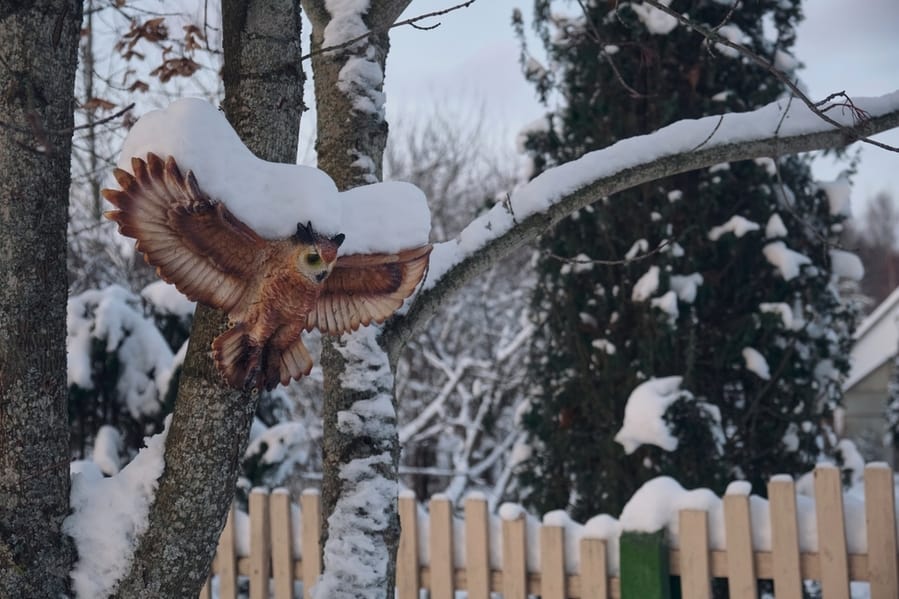
Birds, like other animals, have a deep-seated fear of their predators and any semblance of them.
To scare the birds away, you can use the plastic imitation of these predators, like false owls and snakes.
Place these pseudo-predators on your trampoline, nearby trees, or poles. You can routinely move the fake predators around for a more realistic look.
Note: Birds are smart, observant animals. If a perceived predator remains in one position for too long, they can tell it is fake.
3. Attach Cable Ties to Your Trampolines
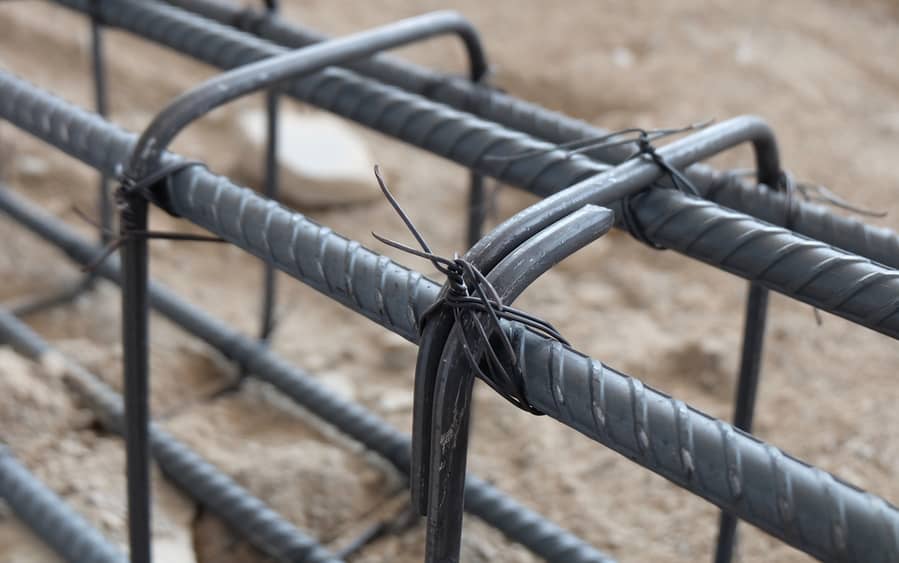
Cable ties, also called zip ties, are fasteners that hold items together, usually cables and wires.
They are typically used to separate and organize wiring to protect them from damage.
These plastic strips serve more than one purpose and can be an effective bird deterrent. Fasten them to different points of your trampoline with the sharp ends sticking up.
Since birds do not like the feel of these sharp ends on their bodies, they will stop settling on your trampoline.
4. Get Some Bird Spikes
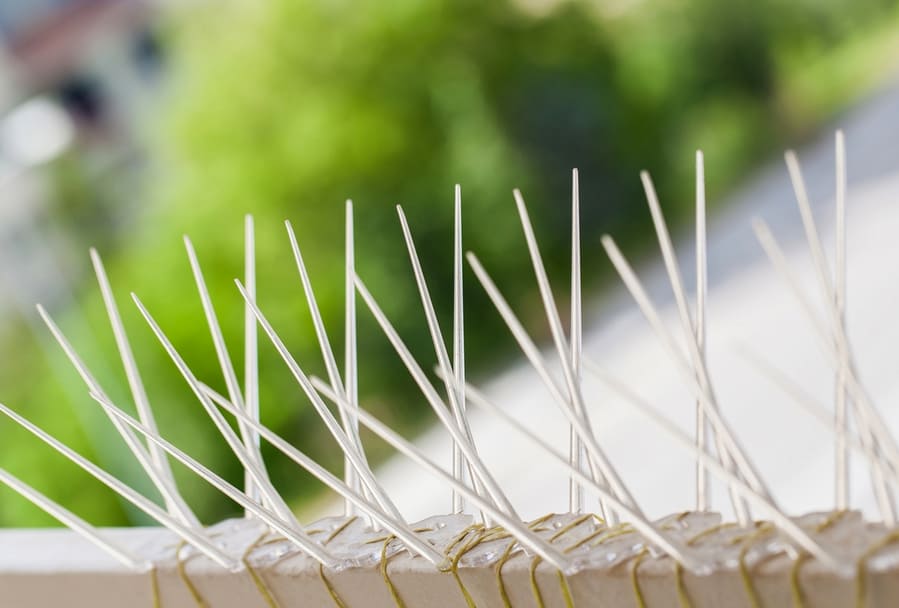
Bird spikes are effective for chasing birds from different locations, like boats and trampolines.
As with cable ties, the pointy ends of these spikes will make landing difficult for birds.
Get clean metal spikes and attach them to your trampoline with gum or zip ties. But, before doing this, ensure that your trampoline meets specific standards.
For one, if your trampoline is positioned under a tree, this strategy may not work.
The reason is that the tree will obstruct the birds’ view and cause them to land on the edge of your trampoline.
Trampolines should never stay under trees because bird poop and dead leaves can still fall through the branches.
So, whether using spikes or not, remove your trampoline from under trees to better protect them.
Before using spikes, please verify that your trampoline has a safety netting over it. Placing spikes directly on your trampoline can hurt unsuspecting jumpers.
Instead, attach these bird spikes to the safety net, with the sharp ends positioned upwards.
5. Get Some Sound Repellers

Sound repellers release ultrasonic sound waves that scare many pests away, and birds are no exception. These sound repellers are easy to install and will not disturb human residents.
However, the device does not pick and choose which animal to scare off.
So, if you have domestic animals like dogs and cats in your home, the sound of repellers can negatively affect them.
6. Get Some Wind Chimes
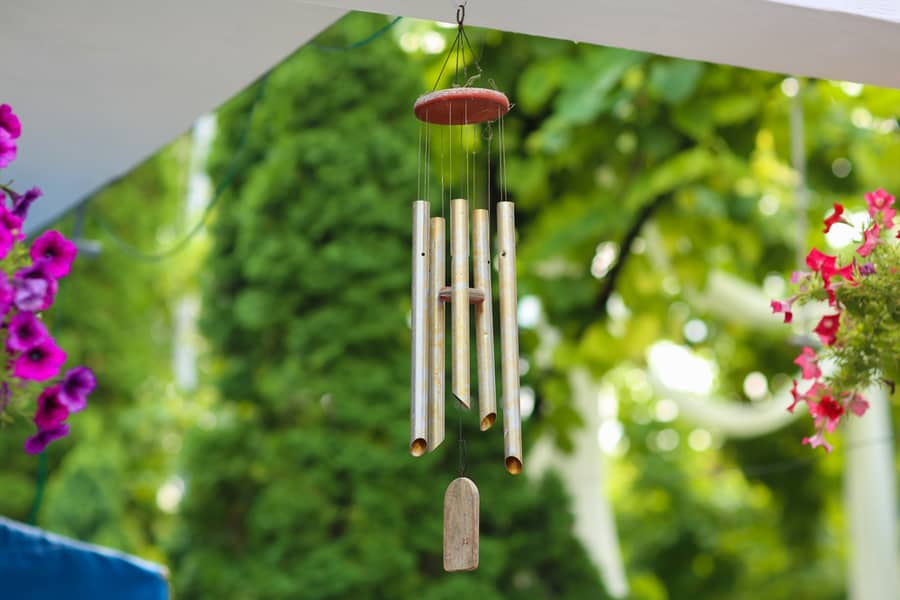
Birds detest quick movements and loud sounds.
Thankfully, a wind chime represents both. This deterrent can help prevent birds from perching on your trampoline or around your house.
However, the noise from wind chimes can only keep birds away for a while. With time, they can adjust to the sounds and resume perching.
So, don’t set this up as a long-term strategy. Instead, combine wind chimes with other bird-deterring strategies.
7. Use Reflective Objects To Deter Birds

Sunlight hits reflective objects and creates a reaction that affects bird vision.
It blinds them for a moment, making it challenging to see safe perching spots.
You can repurpose some old CDs and attach them to your trampoline edges. Position them so that they hit the sunlight and temporarily blind the birds that attempt to land.
Tin foil is another option, but it may not last as long as reflective disks. Hence, it requires frequent replacements.
Conclusion
Although beautiful creatures, birds can quickly become problematic.
Birds will probably perch on your trampoline, and you may have to clean up after them. However, with specific preventive measures, you can mitigate this problem.
We described some humane bird-deterring strategies above that you can deploy without hurting the lovely creatures.
These include using a trampoline cover, realistic-looking predator figures, bird spikes, wind chimes, etc. Go over the different options and choose which works best for you.
Frequently Asked Questions
Can Bird Poop Harm Humans?
Bird poops contain different parasites and microorganisms that can spread diseases to humans upon contact.
Some common symptoms of bird-transmitted diseases are nausea and diarrhea.
How To Drive Pigeons Away From Trampolines?
Pigeons are more challenging to chase than other birds and require stricter methods. You may need trampoline cages, fishing lines, and bird spikes to deter these birds.

